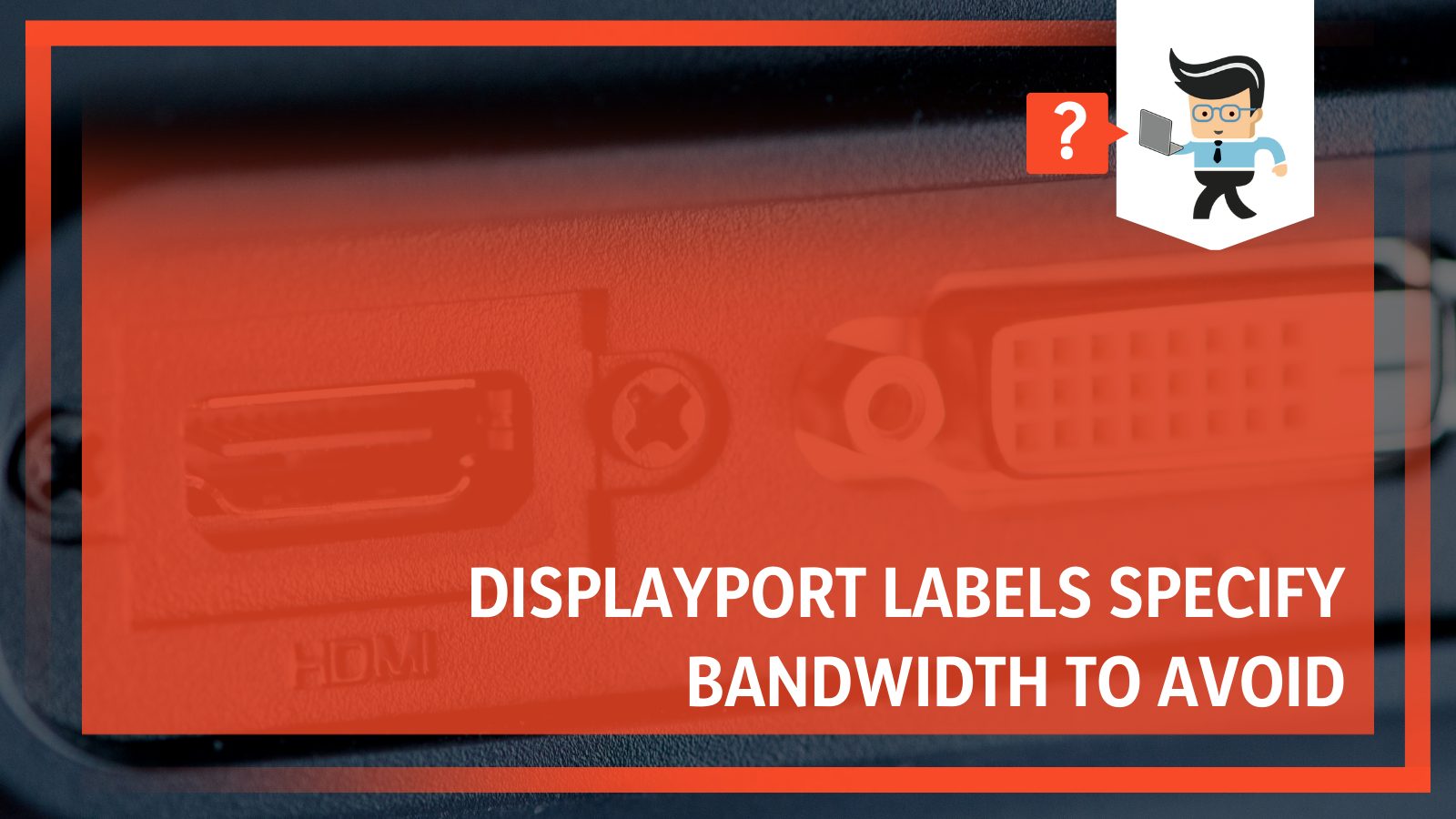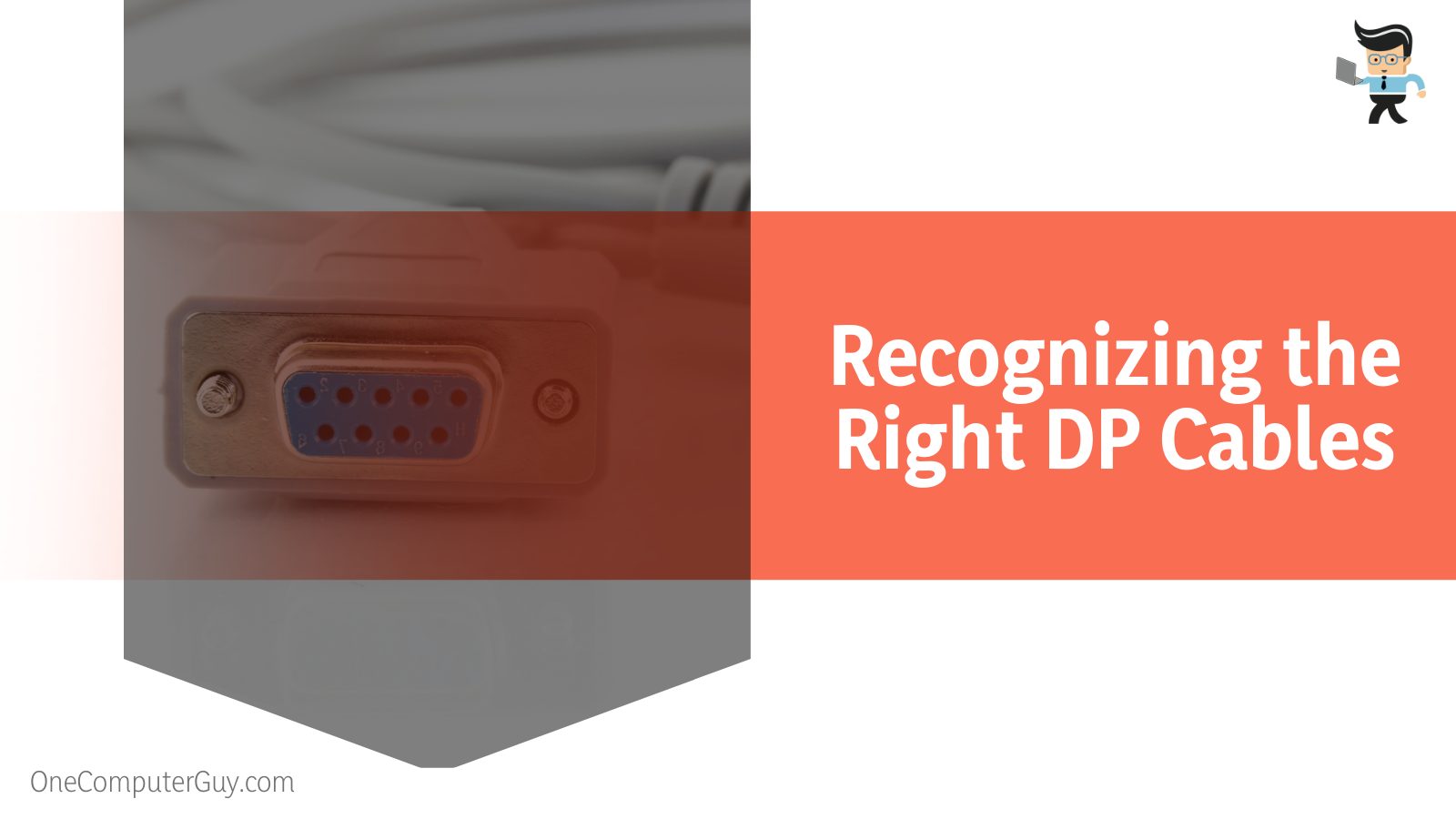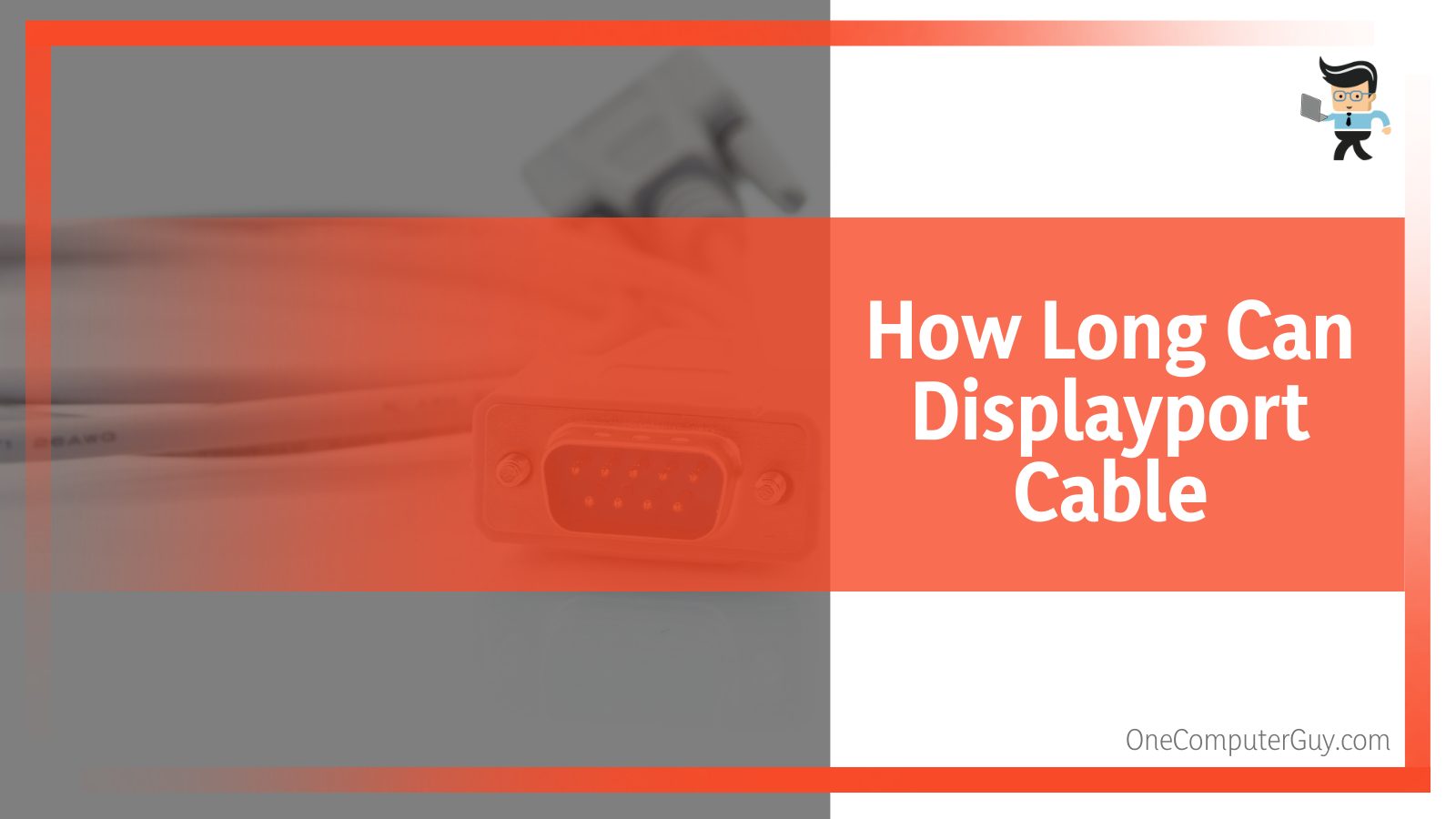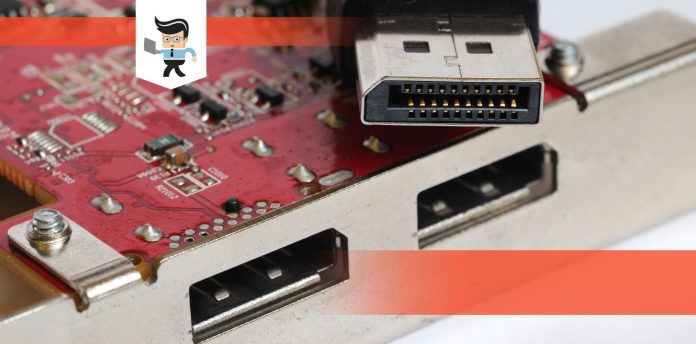DisplayPort labels specify bandwidth to avoid any possible confusion from the consumer’s side and to promote the use of the suitable cable for its specific purpose.
 The manufacturer of the DisplayPort cables, VESA, has recently announced a certification program that is aimed at doing just that.
The manufacturer of the DisplayPort cables, VESA, has recently announced a certification program that is aimed at doing just that.
Using this new certification, users can get a better idea of which monitor, video source, or cable can sustain specific max refresh rates and resolutions as claimed by the labeled feature.
In this complete guide, we will talk about the labels, certifications, and specs you should be looking at, how you can benefit from that information, and why it is essential to avoid any untested cables!
Contents
What Are DisplayPort Labels Specify Bandwidth to Avoid?
DisplayPort labels specify bandwidth to avoid means that DisplayPort and HDMI-certified devices have a specified bandwidth that helps give a better idea of what the products can be used with. This is good as it helps counter any confusion users might feel with their devices.
– Bandwidth Limits in DisplayPort
For video data to be sent and successfully received by the DisplayPort devices, the brand specifies that it must be sent in a transfer unit, also called TU, and this has a general length of 32 to 64 link symbols. However, the transfer unit used by DisplayPort TX is 64 symbols, and this is a fixed rate used to keep the complexity reduced.
There is also some risk in the link bandwidth regarding oversubscription. To prevent it, users must ensure that the packed data rate does not exceed the speed of the link symbols, staying lower or equal at most.
The DisplayPort device has to undertake an action called symbol stuffing when the packed data rate being transmitted is lesser than the link symbol rate. Symbol stuffing occurs with various symbols within the transfer unit, with the symbols before FS being relevant data symbols and framed with the control symbols FE and FS.
Another requirement is that the transmitted media data be distributed evenly inside all the transfer units, thus maintaining and creating a complete active video line.
In case the valid data symbols in the TU end up being more than 62.75, it would show that the link has been oversubscribed in the DisplayPort TX; thus, there wouldn’t be any image projected as Display Port output.
– Importance of UHBR Certifications
UHBR, or Ultra-high Bit Rate, Certifications is a vital aspect concerning the performance credibility of your DisplayPort spec. While DisplayPort has VESA certification, specifying a max transmission rate of 80 Gb/ps, more than double the speed of 32.4Gbps in DisplayPort 1.4, you will still need to check for the UHBR certification.
 Of course, a throughput of 80 Gbps is vast, allowing two 8K screens with HD resolutions at 120 Hz, 10K without any compression, or even 16K with display stream compression. Thus, how promising this could be if UHBR certifications are also in order.
Of course, a throughput of 80 Gbps is vast, allowing two 8K screens with HD resolutions at 120 Hz, 10K without any compression, or even 16K with display stream compression. Thus, how promising this could be if UHBR certifications are also in order.
UHBR certifications are necessary because not just any DisplayPort 2.0-certified cable or monitor means you will undoubtedly get the performances promised above. Different UHBR certifications mean other things.
The DP40 UHBR allows support for a link rate of 10Gbps (termed UHBR10 by VESA) and max throughput of 40Gbps via four lanes. The latest certification, DP80 UHBR, promises double performance. With any certified cable, video, or display source, you can get a throughput of a max 80Gbps through a four-lane system and an impressive link rate of 20Gbps (or UHBR20).
– Avoiding Products Without UHBR Certification
Since UHBR certifications are the baseline for quality checks on DP cables, it is imperative to ensure that you get the suitable line for your needs — something that fits its purpose and your budget.
Most industry-standard cable manufacturers guarantee that all of their products go through these checks. However, like every other technical market, cables have counterfeit products you must avoid at all costs.
It is difficult to decide by listening to a seller alone, as most of them will claim to provide excellent performance quality from their products even when the items have not passed through the VESA certification process.
This is why reading the labels and looking for the UHBR certifications is very important. They are the only sure-shot way of confirming that the DisplayPort 2.0 item you picked can carry a substantial bandwidth.
It is best to buy a sound product once rather than several faulty ones that are not certified and cannot give the most efficient performance.
How To Understand the Bandwidth Limits of DP Cables?
To understand and measure the overall bandwidth limits of your DP cables, you can run benchmark tests on different computers and graphics cards. Since this can be time-consuming for most users, it is also possible to use the UHBR certifications to get an idea of the overall limits.
– Recognizing the Right DP Cables
Various factors affect the performing capabilities of DisplayPort products concerning the amount of bandwidth supported. This could be seen in the example of a Windows OS using DisplayPort 2.0, where the maximum refresh rate of 4K resolution on the device would be 569 Hz.
 Considering the upgrade to UHBR, although there are presently no display cards or monitors that support this, the rate would now be 749 Hz.
Considering the upgrade to UHBR, although there are presently no display cards or monitors that support this, the rate would now be 749 Hz.
We can see from the example of the TV tech giant HDMI that VESA has had a lot to learn. When the market faced confusion with the backlash that came with the understanding of HDMI 2.1 actually being a replacement for the present HDMI 2.0, VESA had good reason to be concerned in their turn and try their best to avoid marketing confusion.
Since handling HDMI 2.1 from the company’s Licensing Administrator was not the most effective, VESA made use of its UHBR certifications to provide a path to simplicity.
It could be debated that this is not quite achieved yet when users have to search for a spec inside of another. Still, specifications of bandwidths to avoid and use are making this process much simpler.
– Finding Cables That Are UHBR-certified
Companies such as WIZEN, Accell, and Bizlink now have UHBR-certified cables, which include Mini DisplayPort and DisplayPort DP80 and DP40. Not only that, but these cables are also compatible with other link rates in DisplayPort, including HBR 2 and 3.
At the moment, the developers at VESA have promised numerous improvements in the cables, ranging from USB-C lines that are passive and full-featured, able to handle different bit rate speeds of UHBR already.
Guaranteeing improvements showing in both the DP cable and connector design, the spokesperson on VESA’s behalf also noted that UHBR-certified USB cables from Type C to DisplayPort were soon going to be made available to consumers, alongside the multiple display and video source products it was currently testing to fit into the UHBR certification category.
When will DisplayPort 2.0 be available? We can fully expect VESA to come out with DisplayPort 2.0 monitors 2022. However, there have been numerous releases planned for 2021 and 2020 before that. None of these came through, but we anticipate the spec’s release pretty soon.
– Locking Mechanism
There are up to twenty pins fitted in an L-shaped connector in the DisplayPort spec. Others also consist of various locking mechanisms that allow a safe and secure connection and ensure no unintentional disconnection or threat of the spec loosening.
By keeping your relationship adequately secured with the DisplayPort locking mechanisms, you will be able to avoid time-consuming risks of downtime, signal loss, and the risk of losing the transmitted data.
FAQs
– Can I Tell How Long Can Displayport Cable Be?
The lengths of Display Port cables vary, depending on your purchase of choice, but according to the company, 49 feet or 15 meters is the maximum cable length. Still, depending on the resolution, it is possible to cover distances over 15 meters with the cable.
– Which Is Better, HDMI 2.1 vs DisplayPort?
HDMI 2.1 is better on gaming consoles, while DisplayPort does not bode well; but on PC, DisplayPort boasts a variety of increased options compared to its rival. In the case of flexibility, DisplayPort has support for Alt-mode available on USB-C and daisy-chaining, so it is better in this area.
– What Is the Use of DisplayPort Alt Mode?
If your computer is equipped with USB-C, DisplayPort Alt mode on DisplayPort will allow you to make a direct connection between a monitor or display as long as they support USB-C and have the relevant port for the link to happen.
Conclusion
To conclude our detailed guide, it is clear that DisplayPort labels must be used for purposes that fall within their given bandwidth limitations to ensure a better user experience.
Since there is a lot of data in the comprehensive guide, we have compiled a summary of short bullet points in the next section to make it easier for you to navigate through all the data:
- If you buy a cable that doesn’t match the bandwidth requirements of your performance, you might run into errors like lack of audio and video output while no GPUs in the market support it.
- Moving to UHBR20 could get you a 749 Hz rate with 4K video if you use Windows and DisplayPort 2.0.
- A certification of DisplayPort 2.0 does not guarantee that you will get the expected performance from your monitor or cable.
- The DisplayPort TX comes equipped with the 64-symbol TU, which can be used to avoid a more significant baseline bandwidth usage.
Choosing the suitable cable with the right bandwidth capacity and the relevant cable can help you achieve optimum performance without running into any performance errors. With this in mind, use the data provided in this guide to choose the best Displayport devices for your system!







